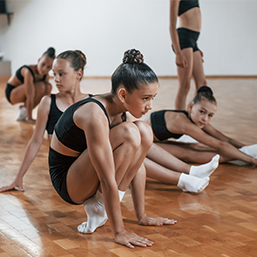
Extracurricular activities can bring amazing gifts to our kids. Some parents follow the guidelines of one artistic activity and one physical activity for each child. Other parents favor the free play idea – that kids will get what they need on their own.
\nParents often ask me, “how many extracurricular activities are right for my child?” There is no correct answer on this one – or, more realistically, there is a correct answer for every child in every family. Let’s explore:
\n \nThe Pros
\nBuilt-in childcare. Activities can be a way of keeping your child safe between when school ends and when you are available.
\nAnother villager. Our kids can benefit from the care and ideas of many different adults in their lives, expanding their sense of connection to community.
\nAutomatic screen-free time. Enough said.
\nSocial opportunities. New activities mean learning how to get along with new people and potentially developing new friends.
\n\n
The Cons
\nMore driving. This is one more addition to your schedule as well. How will they get there and home?
\nMore pressure. Is your child ready for another set of responsibilities (packing the bag, learning another thing, setting aside time to practice skills for this activity outside of the activity itself, arguing with you about practicing these skills).
\nMore expenses. In addition to the initial costs, there are often costs associated with gear and fundraising.
\nMore arguments. If your child doesn’t love the idea of this activity, there may be whining about it the night before and arguments/bribing about getting the child to go to the activity that you already paid for.
\n\n
How do we figure it out?
\nBefore ever approaching your child about an activity, it’s important for you, the adult(s), to get clear on what fits your family. The following questions can bring a lot of clarity and can help with decisions all the way along our child’s development:
\nDoes it align with your family’s values? Each family will feel differently about how they teach and live the ideas of responsibility, community involvement, courage, etc.
\nDoes it align with your family’s schedule? COVID helped many of us to see what an empty schedule felt like, and some families have chosen not to return to the pre-COVID hustle.
\nDoes it fit your family’s finances? There’s no need to go into debt.
\nDoes it fit the specific child you are registering for the activity? Just because one sibling does it, doesn’t mean it’s a fit for all the children.
\nDo you have the time and mental energy? Supporting your child through the challenges and growth opportunities that come with each new activity takes a lot of work.
\nWhat is your family’s policy on following through with commitments? It’s very important that parents communicate and follow through with the expectations about attendance and participation in a new activity.
\nSome kids come home begging to try something new. Your answers to the questions above will help you determine whether they’ll need to finish one activity before starting something new.
\nSome children are reluctant to try anything, and your family’s values will determine whether you let that be or encourage them to choose a starter activity, working with them to build the courage to begin something new.
\nAlong the way, you’ll create your own set of questions and parameters to get clearer about these decisions. Working with your child(ren), rather than just telling them what they will be doing, can smooth the extracurricular journey.
\n\n
Author, blogger, podcast host, and parenting expert, Julie Freedman Smith has been supporting parents across North America for 20 years. Through her company JFS Parent Education, she helps parents find relief from their everyday parenting challenges. Want to know how she can help you? Email her today:
\n
See our related articles:
\nCalgary’s Child Magazine © 2025 Calgary’s Child